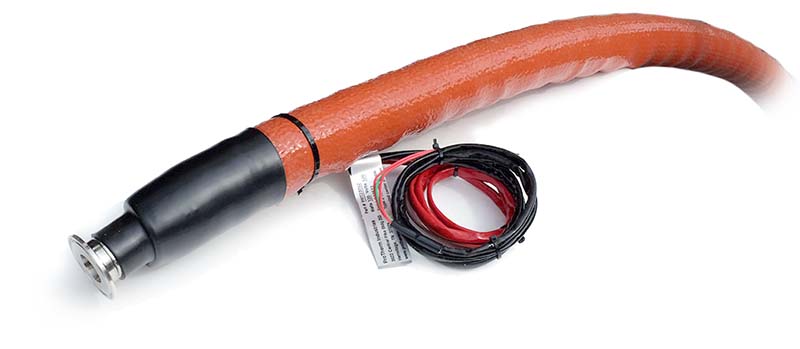When selecting a hose, you must consider three variables: pressure-carrying capability, flexibility, and chemical compatibility.
1. Pressure Carrying Capability
The hose must be strong enough to handle the pressures to which it will be exposed. To determine hose pressure capability, consult sales for the “Maximum Working Pressure” stated for the hose. The Maximum Working Pressure must be reduced for each of the following circumstances:
- Temperature – As temperature increases, hose working pressure decreases. After you have determined the proper alloy (see “Chemical Compatibility” below) go to the “Derating Factor” and match the alloy of the hose and braid with the highest temperature to which they will be exposed (either internally or externally) to obtain the proper derating factors. Then multiply the hose’s Maximum Working Pressure by the most-limiting temperature derating factor.
- Dynamic Pressure – Pulsating, surge, or shock pressures, like those encountered with quick opening or closing valves, can inflict severe damage on a hose. If your application entails pulsating pressures, the working pressure should be de-rated by half. If your application entails shock pressures, de-rate the stated working pressure to 1/6 of its value.
Example:
1” Annuflex hose – T321 stainless steel hose and T304 stainless steel braid @ 500° F with shock pressures.
Catalog Maximum Working Pressure = 718 psi
Temperature Derating Factor at 500° F. = 0.88; and the Pressure Derating Factor = 1/6
Maximum Application Working Pressure = 718 psi x 0.88 x 1/6 = 105.31 psi
2. Flexibility
Confirm that the hose’s minimum bend radius is less than the bend radius required for the application. Increasing the installed radius of the hose will reduce fatigue on the corrugations, increasing assembly life. Care should also be taken for applications with vibration. Contact Protherm’s Inside Sales Department if excessive vibration is present.
3. Chemical Compatibility
You must choose a material for the hose and braid that is compatible with the media being conveyed through the hose, as well as the environment in which the hose is to be installed. When determining chemical compatibility, it is important to know the temperature and concentration of the chemical(s). Although there are many resources to confirm chemical compatibility, two of the industry standards that you may use are the National Association of Corrosion Engineers (NACE) and the Compass Corrosion Guides. You may also contact Protherm’s Inside Sales Department, which can check these sources for you.

